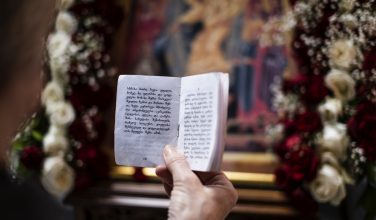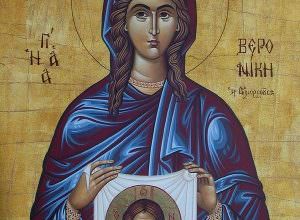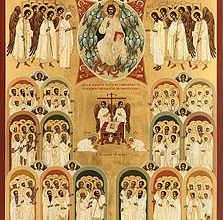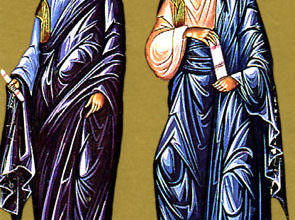The Background and History of Greek Orthodox Bishops
Comments Off on The Background and History of Greek Orthodox Bishops
Bishop is the highest rank of the Christian Priesthood, with deacons and priests being the lower ones within the Greek Orthodox Church. At one time, bishops and presbyters (priests) were different names for the same position. After the apostles fell asleep in the Lord, the bishop became the leader of the presbyters. Bishops are considered the “President of the Eucharistic Assembly.” The Eucharistic assembly is made up of the people who come to Liturgy. The bishop is the president because he is the one who controls what happens. None of the clergy can do anything without the blessing of a bishop (both when he is present and when he’s not). When the Bishop is present at a liturgy we see the priest(s) receive the blessing to give blessings, to read prayers, to pretty much do everything. The Greek word for bishop is επισκοπος, which was transliterated into Latin as episcopus, and the Anglo-Saxon’s corruption of that Latin word became the word bishop.
The Apostles were some of the first bishops. Tradition tells us that the Apostle James (Ιακοβος) was the first bishop in Jerusalem, Peter was in Rome and/or Antioch, and Andrew was in Constantinople. They left successors of the leadership of the Church who were the bishops. You have to remember that the first Christians believed that Christ was going to return very soon for the Second Coming, so the setup of a sustainable hierarchy wasn’t necessarily at the forefront of the minds of any Christians at the time. Toward the end of the 1st Century a new set of famous bishops appears, such as St. Clement of Rome and St. Ignatius of Antioch. Throughout the century many saints were bishops, such as Saints Nicholas, Spyridon, John Chrysostom, Gregory of Nyssa, Gregory the Theologian, Photios, Nektarios, and so many more.
Today in liturgical worship we can find bishops wearing crowns (mitres), a tunic (sakkos), omophorion and they carry a staff (paterissa). Most of this is of a much later tradition, happening after the fall of Constantinople, the capital of the Roman Empire (also known as Byzantine Empire after the rise of the eastern portion of the empire), which fell in 1453 AD. These bishop vestments are actually taken from the garb emperor of Constantinople. This was due to the fact that in 1454 AD, the Ottoman Turkish sultan Mehmet II made the Patriarch of Constantinople the spiritual leader and the “political” leader of all Orthodox Christians under Ottoman rule. This changed the role of this specific bishop, which we now know as the Ecumenical Patriarch. Prior to this, this Patriarch was already seen as the “first among equals” in terms of all the patriarchs by the 3rd Canon of the Second Ecumenical Council and the 28th Canon of the 4th Ecumenical Council. The other Patriarchates were originally ordered Rome (formerly), Constantinople, Jerusalem, Alexandria, and Antioch, after the great Schism, Rome was no longer seen a patriarchate, and eventually Moscow became the consensus pick as another Patriarchate. At this point it is important to mention that all bishops are of the same ordination and same order, though there are different titles and responsibilities for Patriarchs, Archbishops/Metropolitans, and Bishops.
Categorized in: Greek Orthodox Religious Information
This post was written by Greek Boston
Share this Article:





